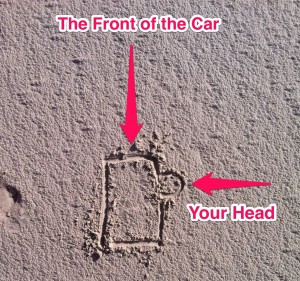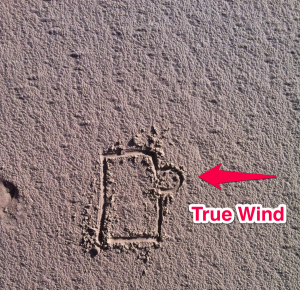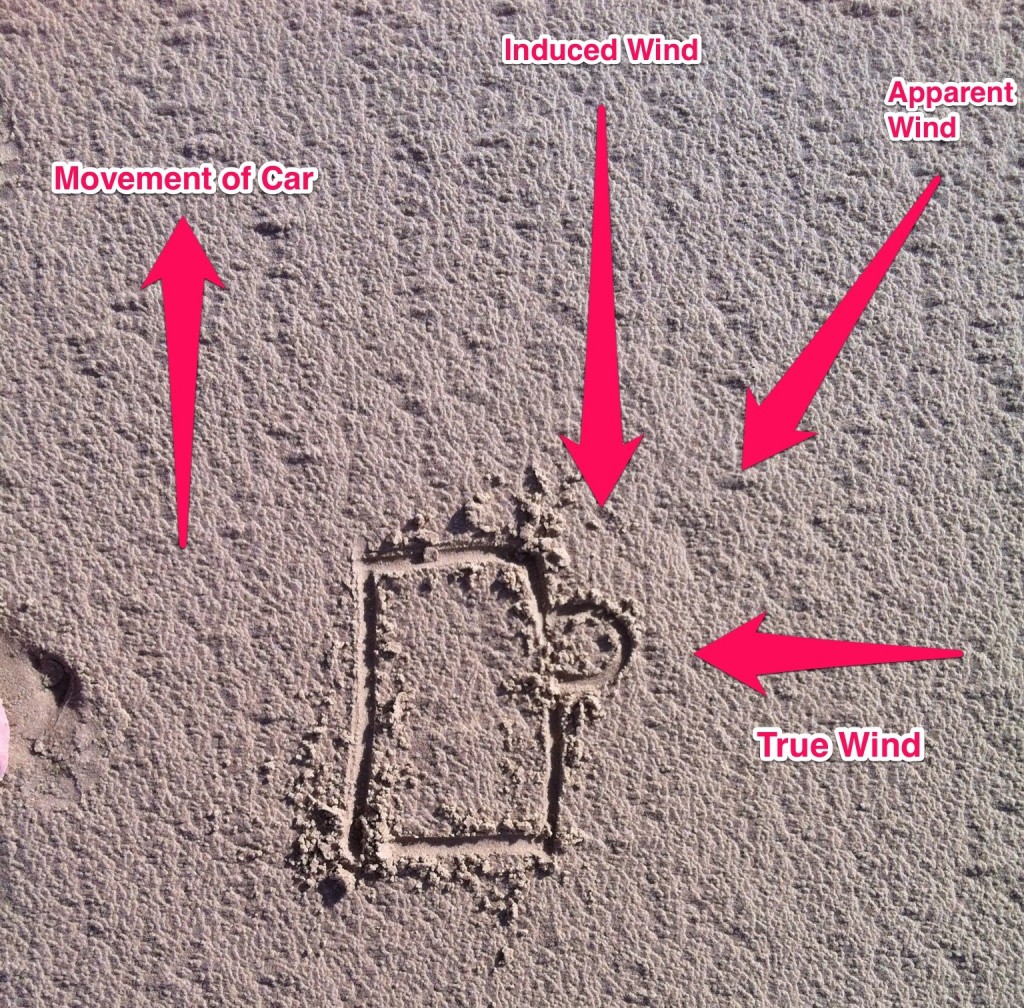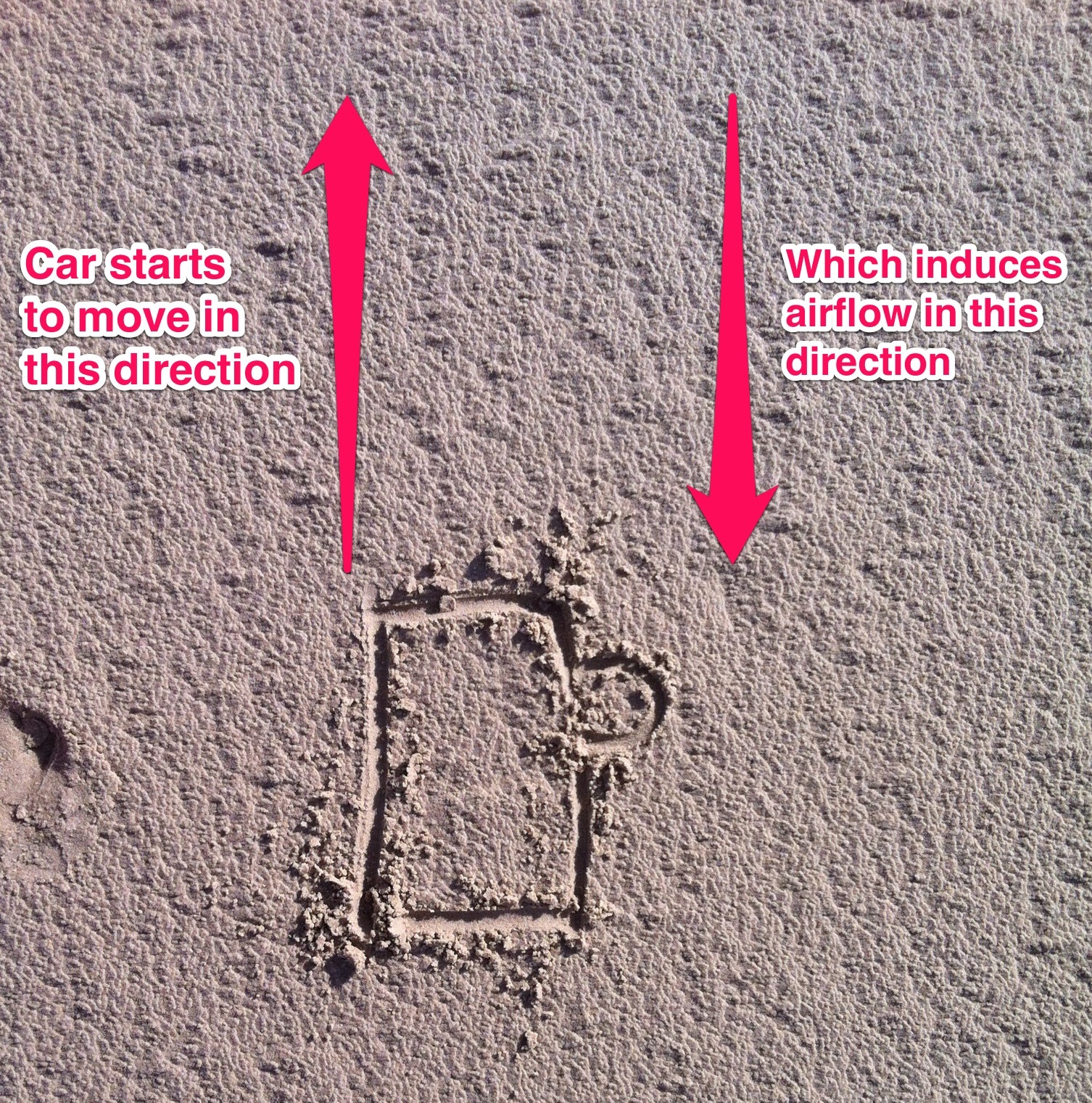
There are 3 different winds which we need to be aware of when kitesurfing. The 1st of these is the true wind, then we have induced wind and finally the apparent wind.
To best explain these let’s use a little example:
Imagine you are sat in a stationary car with your head sticking out of the window. The wind is blowing at a 90° angle to the car. This wind that you feel in your face while the car is stationary is what we call the true wind. That is it is the actual direction the wind is blowing in.


Now imagine that the car starts to accelerate slowly. As the car moves through the air, air flow is induced over the car in the opposite direction to which it is moving. This wind, created by the movement of the car through the air is called the induced wind.
At this point the laws of the universe had a problem. As it realised the wind couldn’t come from 2 directions simultaneously. So what happens instead is these 2 winds combine to form what is called apparent wind.

This is the wind you will feel on your face as the car is moving. So as the car speeds up you will sense the wind coming from nearer to the front of the car (in the direction of the induced wind), as the car slows down the wind will move back towards the position of the true wind. Apparent wind is basically a combination of induced and true wind, and depending on which one of these is stronger (ie if the car is moving faster than the true wind or vice versa) will influence the direction you feel the apparent wind coming from.
How This Applies To Kitesurfing
When riding in kite surfing the kite flies on this apparent wind. Because we are now moving over the water and the kite is moving with us, we are inducing airflow over the kite, this combines with the true wind which leaves the kite flying on apparent wind.
Still with me?
What this means in effect is that the faster you go on a kite the more the apparent wind shifts to be coming from a direction directly in front of you. This means that your wind window shifts further and further behind you as you speed up more and more.
It is for this reason that many beginners believe the while kite surfing the kite sits in the power zone. As this is often where the kite appears to be from the beach (as when your stationary the wind window does not move as the kite is always flying on true wind). However while riding the kite ALWAYS sits at the very front edge of the window. Obviously the faster you go the further back this front edge of the window will be as the apparent wind shifts further and further in front of you.
Imagine for a moment that you were going very fast. The apparent wind will be coming from almost directly in front of you and so the front of the window will be almost 90° downwind of you. This means that all the pull from the kite is in a down wind direction. This is why to go upwind we must ride slowly. By slowing down we bring the apparent wind closer to the true wind (ie further behind us) and the wind window moves back around in front of as (similar to how it is on the beach when we are stationary) this allows the kite to sit at the front of the window very close to our intended direction of travel. This way rather than the kite pulling us off downwind at breakneck speeds the angle of pull from the kite and our direction of travel are very similar.
This is quite complicated concept to get your head around, and to be honest isn’t essential for your kite surfing ability. However by understanding this you’ll be in a much better position to self analyse mistakes made as you progress in your kite surfing career.

Great article, could you include a couple more diagrams of the kite, wind window and the 3 winds…thanjs
Awesome!